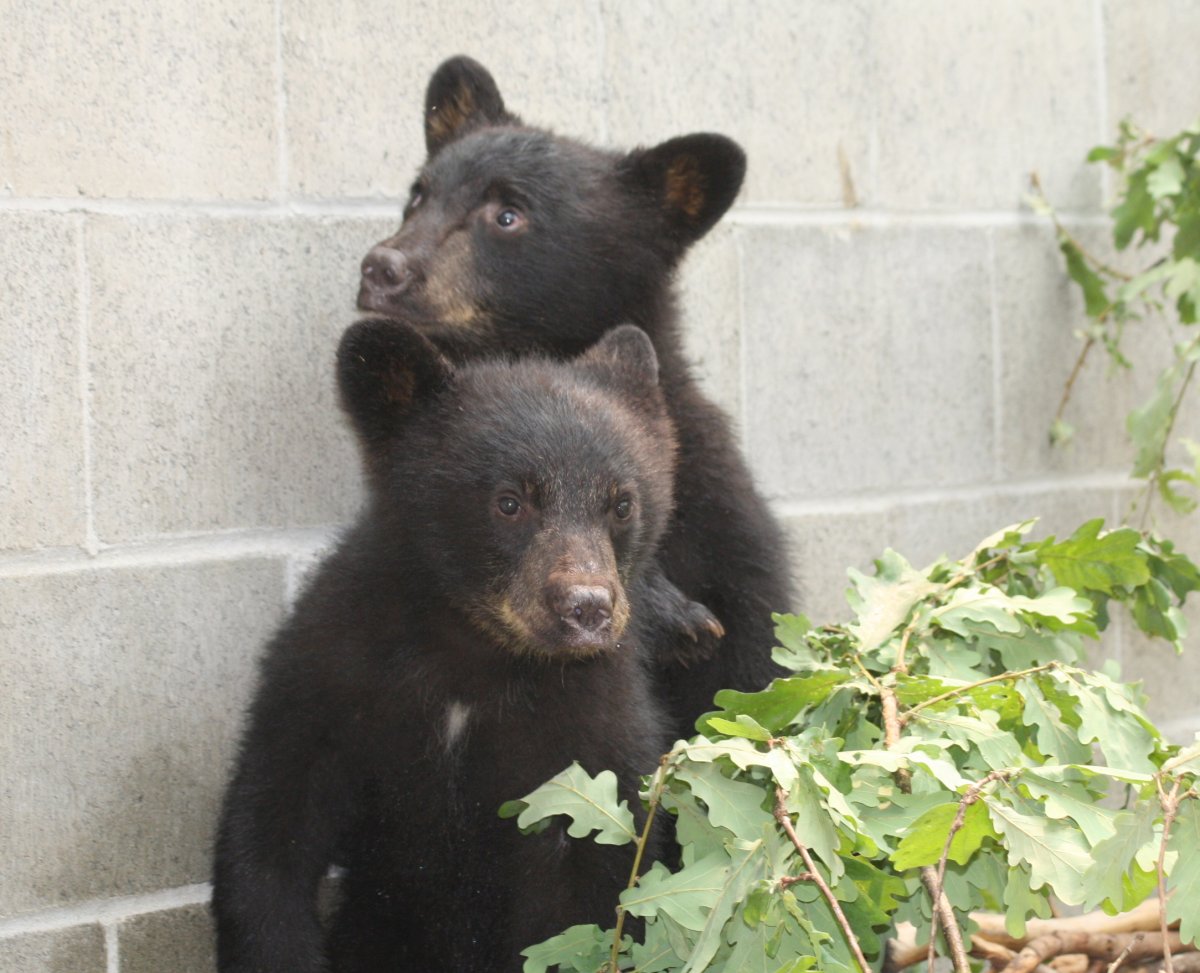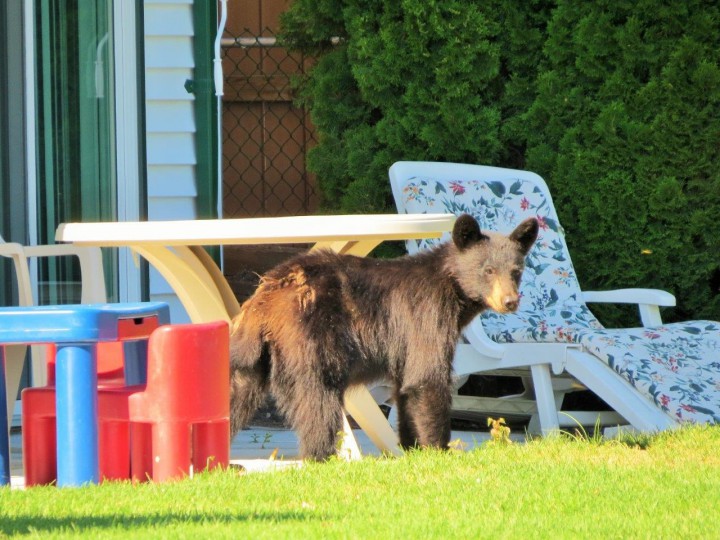Watch the video above: Bear cubs taken in Port Hardy

TORONTO – Bears who feed on human food are considered a threat to people. But what do you do after they’ve been caught eating from your home? Do you “destroy” them, or do you re-release them into the wild?
Two bear cubs in Port Hardy, B.C. were taken to the North Island Wildlife Recovery Association after members of the Port Hardy Fire Department rescued them from a tree. Their mother had been shot and killed earlier after it had reportedly been eating out of a freezer in a mobile home.
A conservation officer who refused to put the cubs down was suspended. Now people are asking why the cubs were considered to be a threat to humans.
READ MORE: UPDATE: Conservation officer suspended after refusing to euthanize orphaned bear cubs
Provincial ministries that deal with wildlife all state the dangers of bears that become familiar with getting food from human sources. And in B.C., the Ministry of Environment hits the message home.
Its site on bear safety states:
“A fed bear is a dead bear. Most people are not aware of their role in the destruction of bears. If humans allow bears to access non-natural food sources such as garbage, they help to create ‘problem’ bears. In most cases, ‘problem’ bears must be destroyed because they damage property and are a potential threat to human safety.”
Addressing the press on Wednesday, the acting deputy chief for the BC Conservation Officer Service Chris Doyle said that it was unfortunate that conservation officers in Port Hardy were forced to destroy the sow, but that it was a balance between ensuring public safety and protecting wildlife.
As for leaving the orphaned cubs behind, he said that deciding what will be done with them is a process involving many authorities.
“Conservation officers, senior ministry staffs, biologists, as well as wildlife veterinarians will determine how orphan cubs are dealt with. And will use various assessment tools including obviously the health and condition of the animals themselves as well as the level of habituation and the level of food conditioning of those cubs to determine what can happen with those cubs, as well as their age.”
While older ones may be allowed to carry on in the environment, smaller ones may go into wildlife rehabilitation facilities or may undergo further assessment.
He said that recently there have been a few cubs that have been let back into the wild after being captured.
“Obviously the preference is to keep the bears alive and wild and to prevent the conflicts from happening in the first place,” Doyle said.
However, he stressed that the public needs to do their part, reducing access to food sources.
When deciding whether or not to destroy the bears, it’s important to determine their level of food habituation. If they know there are food sources around a home, car, etc., they will return to that site and that’s when public safety trumps the wildlife concerns.
Bears are a fairly common sight across the country. It’s estimated that there are roughly 380,000 black bears in Canada and 20,000 grizzlies in B.C., Alberta, Saskatchewan and Manitoba. So we’re bound to interact with them often enough.
In June, a black bear was shot and killed by police in Newmarket, Ontario, just north of Toronto. The bear had been spotted earlier in the week. Eventually it had climbed up a tree. When it began to descend police felt that public safety was at risk and shot the bear.
- ‘Shock and disbelief’ after Manitoba school trustee’s Indigenous comments
- Canadian man dies during Texas Ironman event. His widow wants answers as to why
- Several baby products have been recalled by Health Canada. Here’s the list
- ‘Sciatica was gone’: hospital performs robot-assisted spinal surgery in Canadian first
Ontario’s Ministry of Natural Resources wouldn’t comment on the situation in Port Hardy, as details hadn’t been released. However, they did say that the ministry assesses each bear siting on a case-by-case basis. Typically, efforts are made to save the bear rather than destroy it.
“Not all bears that become habituated to human food are destroyed,” said MNR spokesperson Jolanta Kowalski. “Bears that eat out of dumpsters or knock down garbage cans aren’t necessarily a threat to human safety. However a bear trying to break into a house, cottage or car — with people inside — could easily be considered a public safety risk.”
But in the case of the Newmarket bear, police had to make that decision due to unfolding circumstances.
Doyle said that the cubs in Port Hardy are currently being assessed.





Comments